I wanted to begin the New Year at the beginning of the Mississippi River—it seemed like a wonderfully symbolic way to leave the old year behind and begin again with the new year. It was the antithesis of the Times Square chaos of people, noise, and celebration; it was the three of us—Chris, Emily, and me, it was unbelievably quiet, and the fiesta was a frolic in the frosty forest on snowshoes. We walked out of the old year and into the new year with hope and the renewal that comes from a flip of the calendar. It is like a universal ‘permission’ to lay down the things we no longer want to carry and an ‘encouragement’ to begin again. Little did we know on that day that in one week’s time we would have to ‘pick up’ what we did not want to carry and begin, again, with another round of January grief.
With the beginning of the Mississippi River is the start of the Great River Road—3,000 miles of National Scenic Byway that runs on both sides of the River at various places through ten states. Here at Itasca State Park is the beginning of the Great River Road; it is the same road we turn off from to get to our home in Sartell; it is the same road that goes through St. Paul where our son Aaron lives; it is the same road that goes through tiny Cassville, Wisconsin where Chris’ folks were born, raised, and buried; and it is the same road that goes through the metropolitan area of St. Louis, Missouri where a little girl named Mary Brake lived at the beginning of her life.
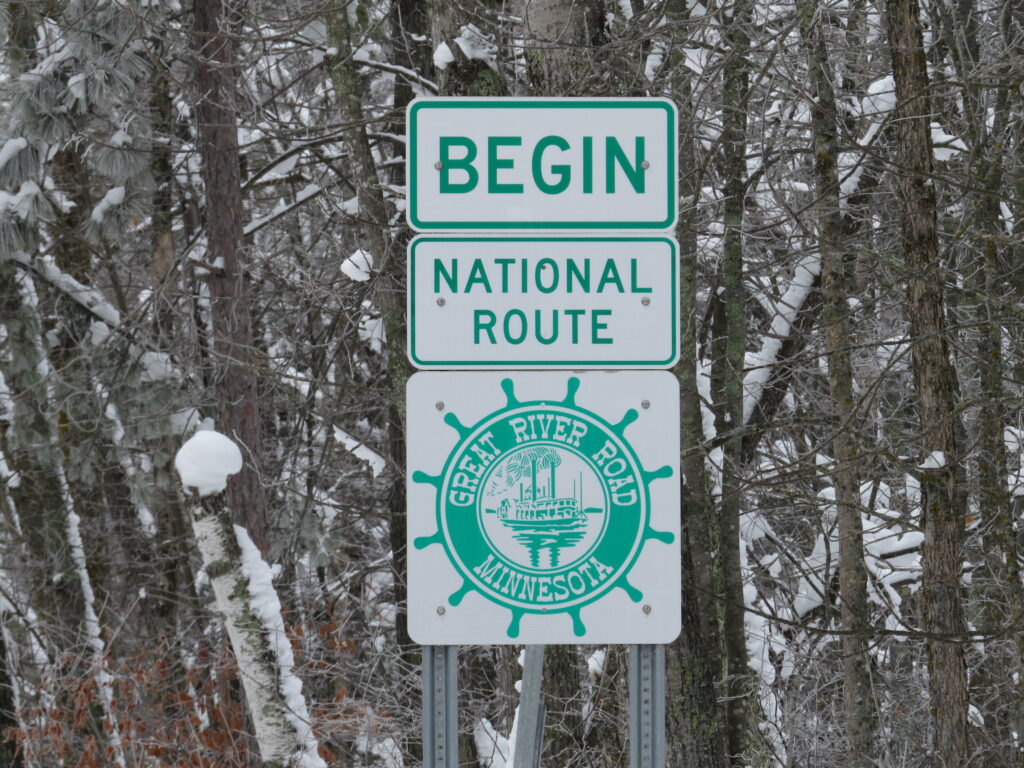
By our second day at Itasca—New Year’s Day—we were getting our bearings. It takes a while to do so when in a new place. It takes a while to do so when death impinges on our lives.
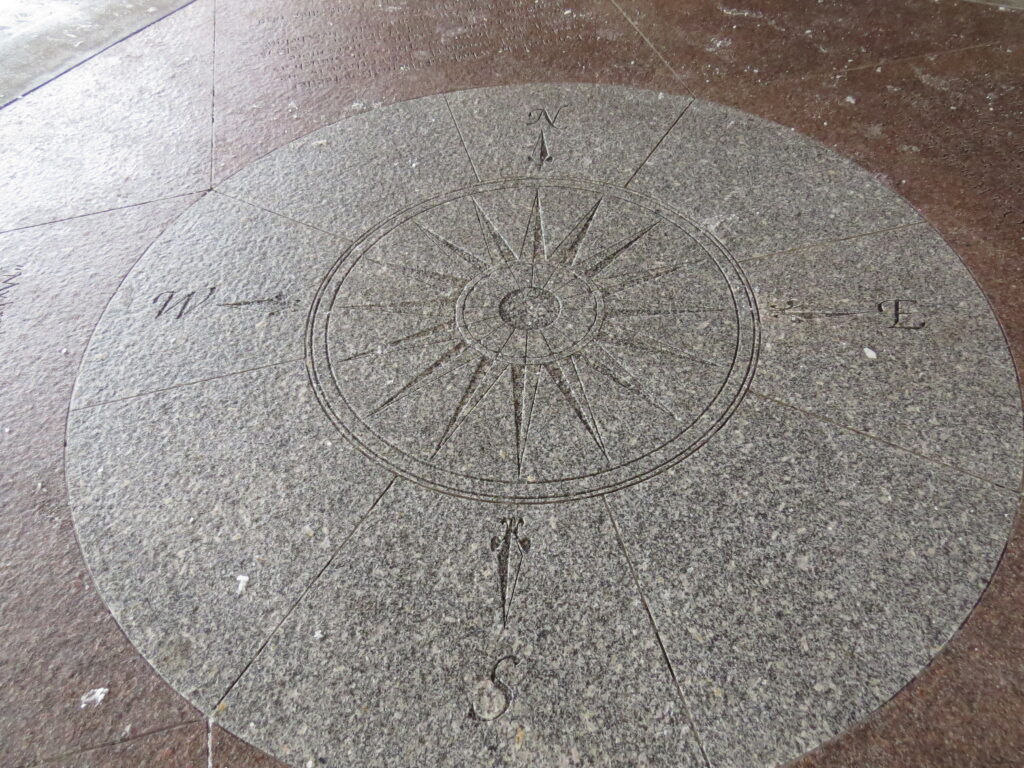
The Great Mississippi River begins at a pile of rocks where water flows from the North Arm of the wishbone-shaped Lake Itasca. It flows north for a time, then arcs east, southeast, southwest, then southeast again until it maintains its southward flow. It took a while for it to get its bearings, too, I guess.
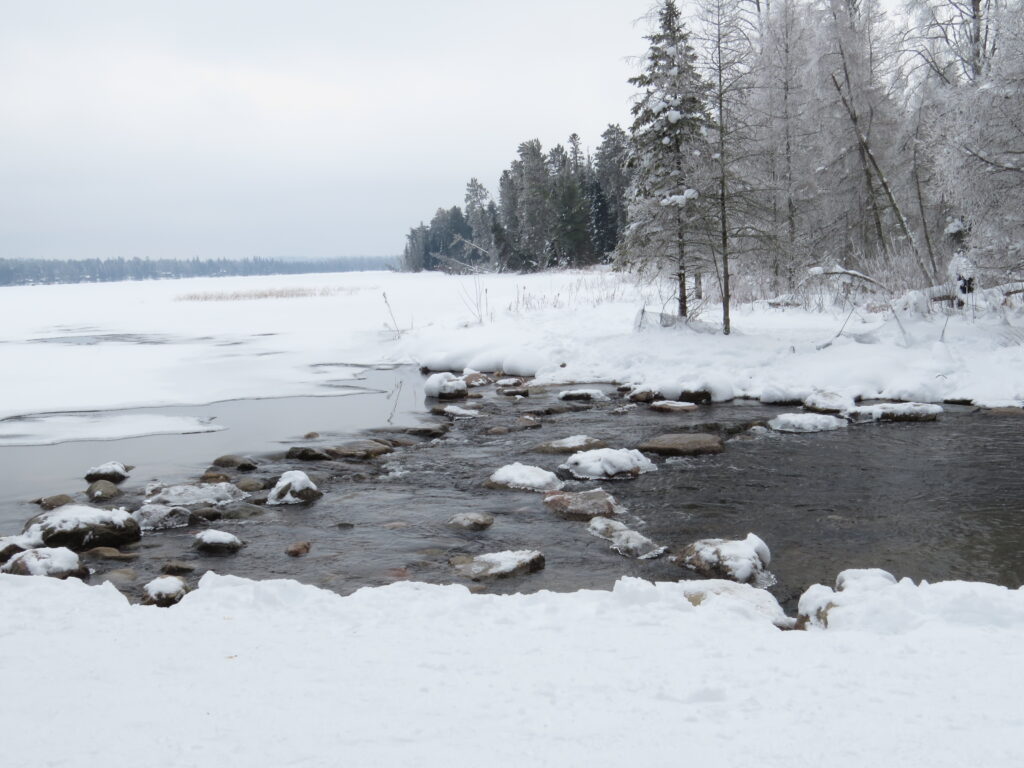
What a fascination (or is it merely function?) we have for ‘crossing’ a creek, a stream, or a River. In the summertime, thousands of people cross the source of the Mississippi on the rocks or by wading in the shallow water. Not fifty yards downstream was a thick wooden plank placed across the mighty maiden river. I wasn’t the first to walk the snowy plank. A little ways down the trail was another bridge where I could see another bridge from which I saw a fourth bridge! I wonder how many bridges cross the 2,552 miles of great, winding River?!
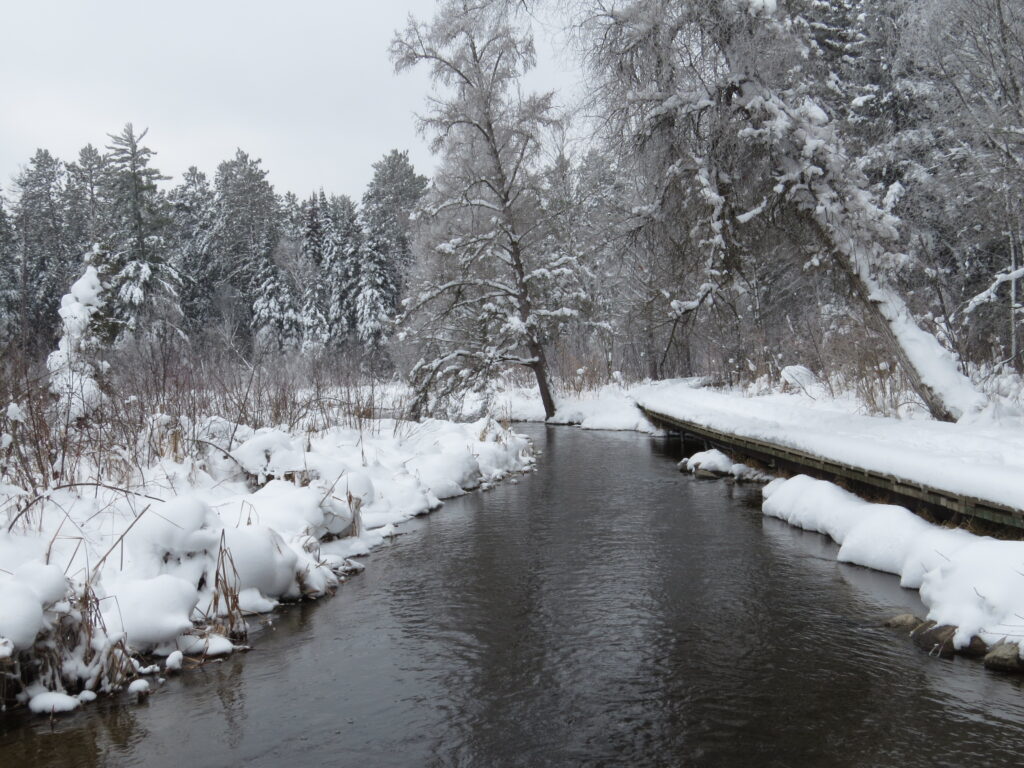
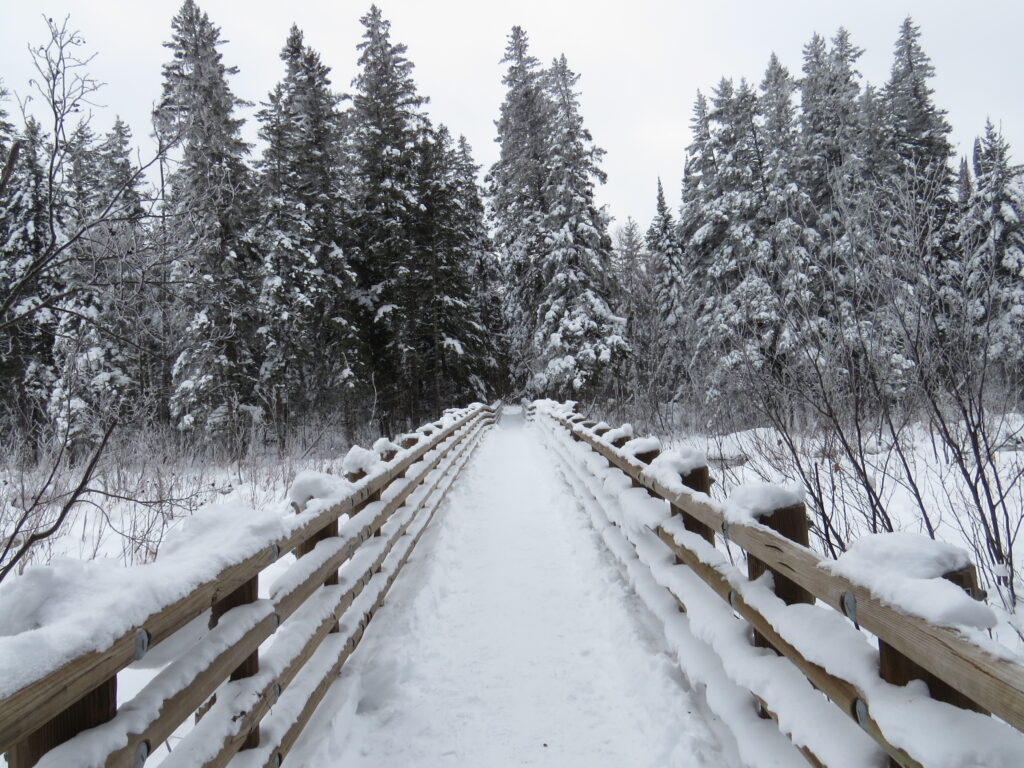
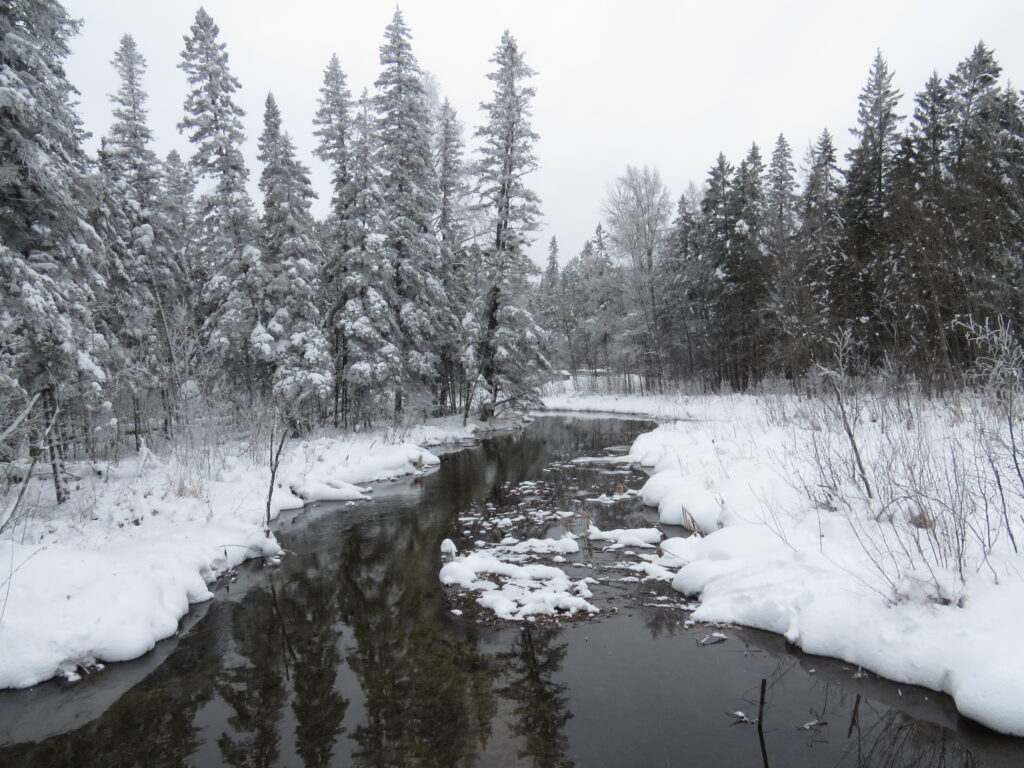
And so it begins….
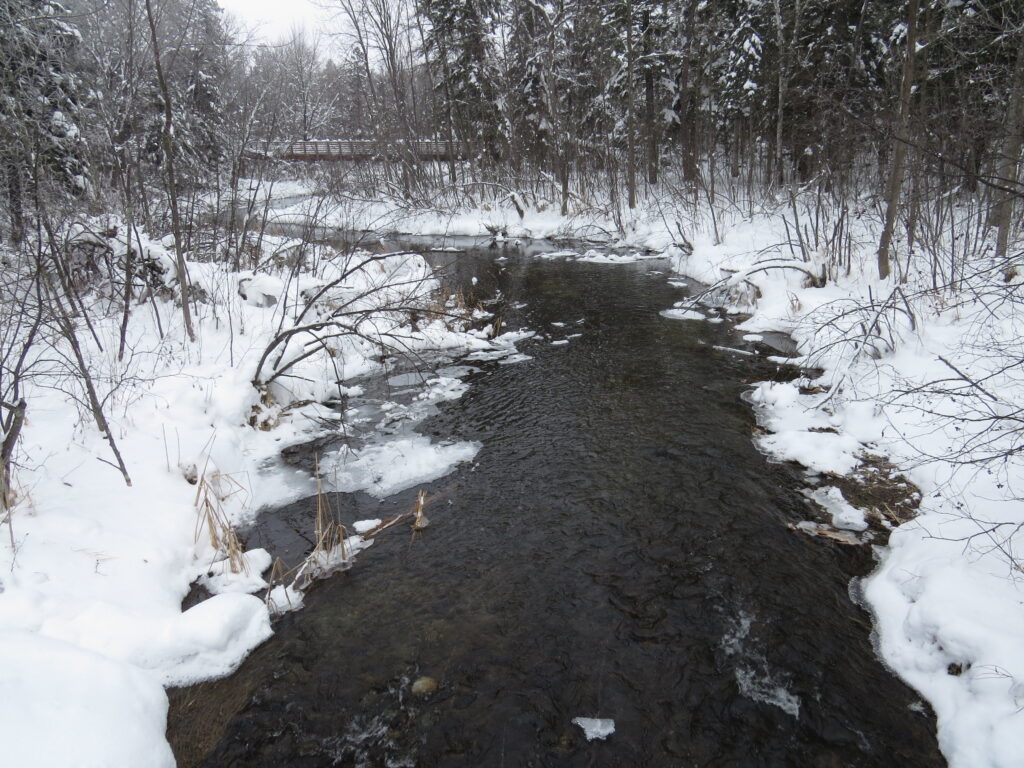
With our map, our bearings, a good night’s sleep, a wonderful cabin-cooked breakfast, and our enthusiasm for the New Year, we strapped on our snowshoes to follow the two-mile loop of Dr. Roberts Trail. It was narrow and ungroomed, a perfect snowshoe trail. The first stretch was on a boardwalk through a bog. Patches of tannin-orange and brown bog water showed through the snow, and even with its lazy flow, I wondered why it wasn’t frozen like the large Lake Itasca we walked beside.
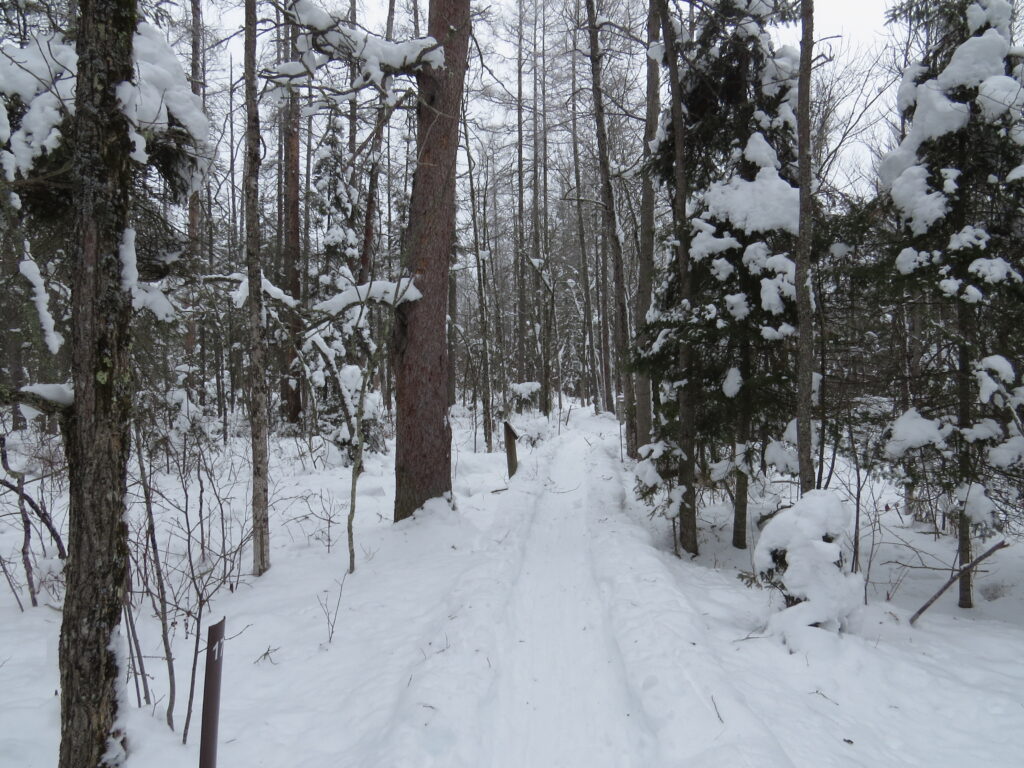
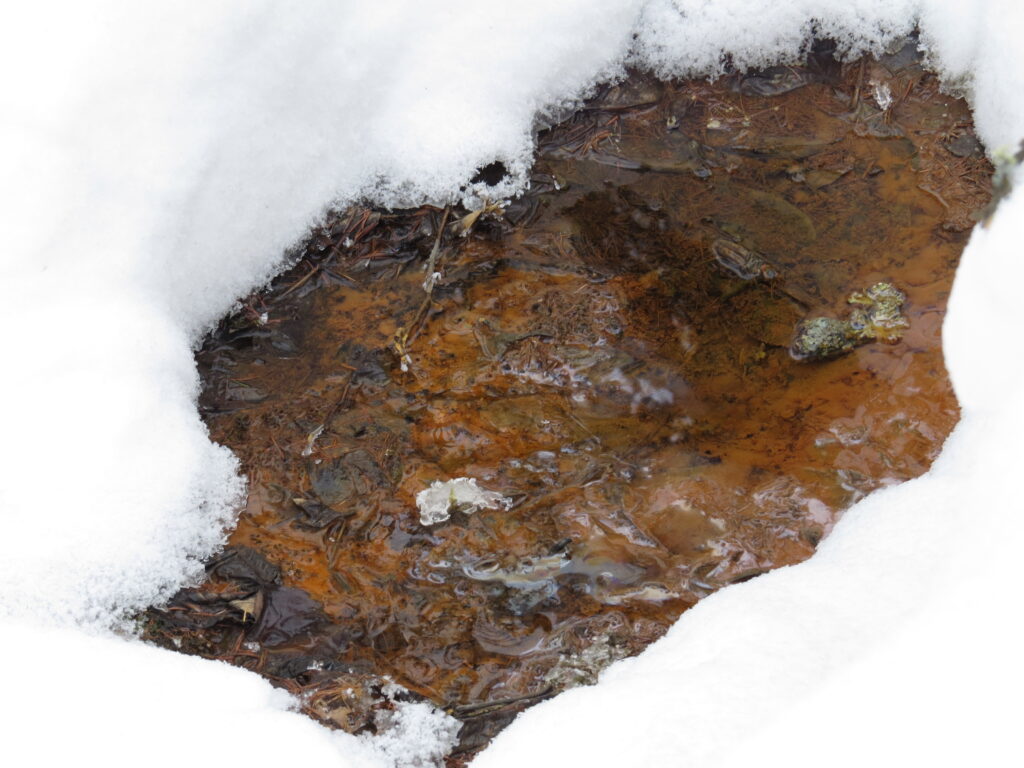
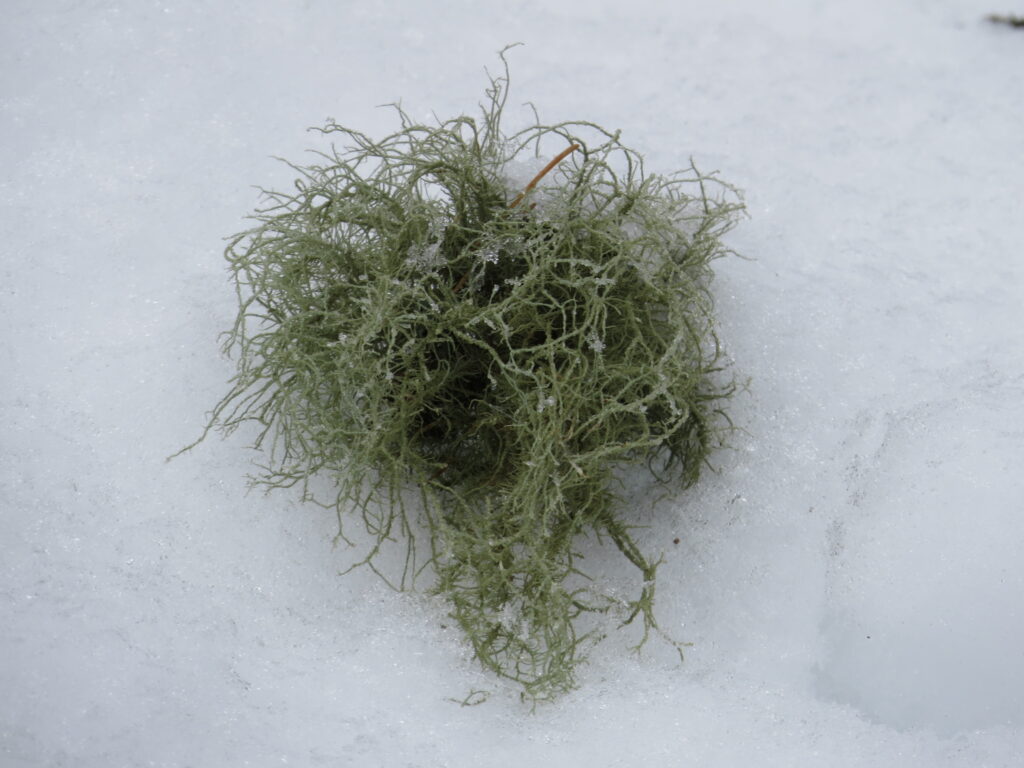
A boardwalk bridge lifted us to a little hill where the Old Timer’s Cabin overlooked the Lake. It was the first building project of the Civilian Conservation Corp (CCC) at Itasca, which began in December 1933. Also notable is the size of the logs—a cabin built with only four logs!
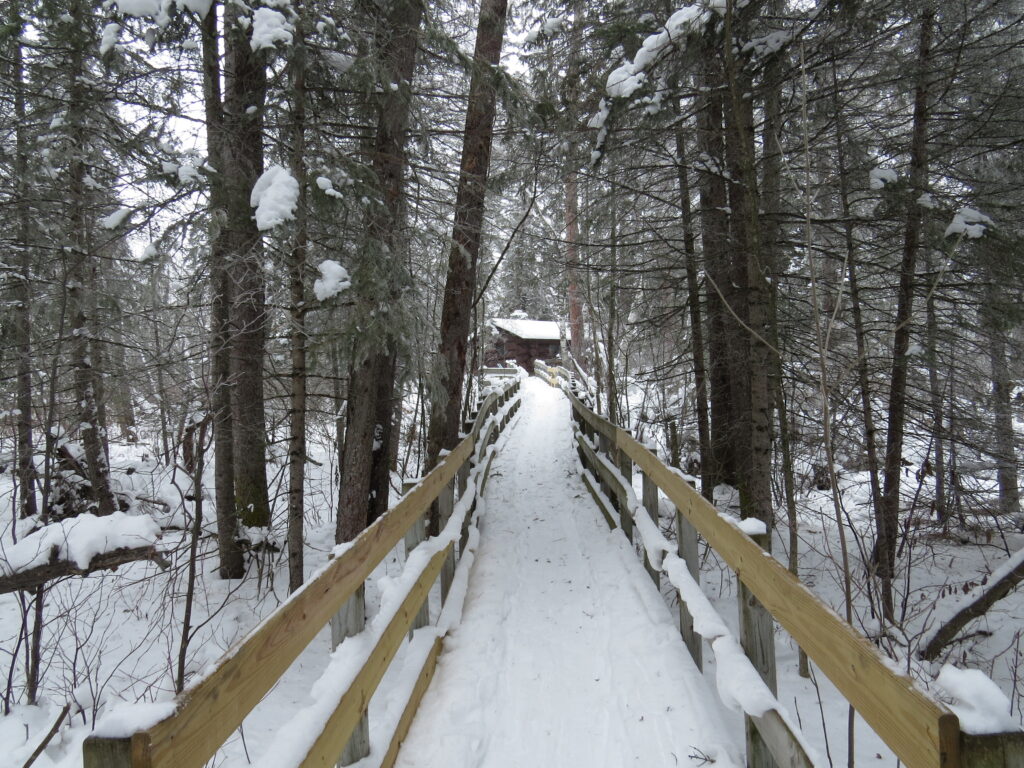
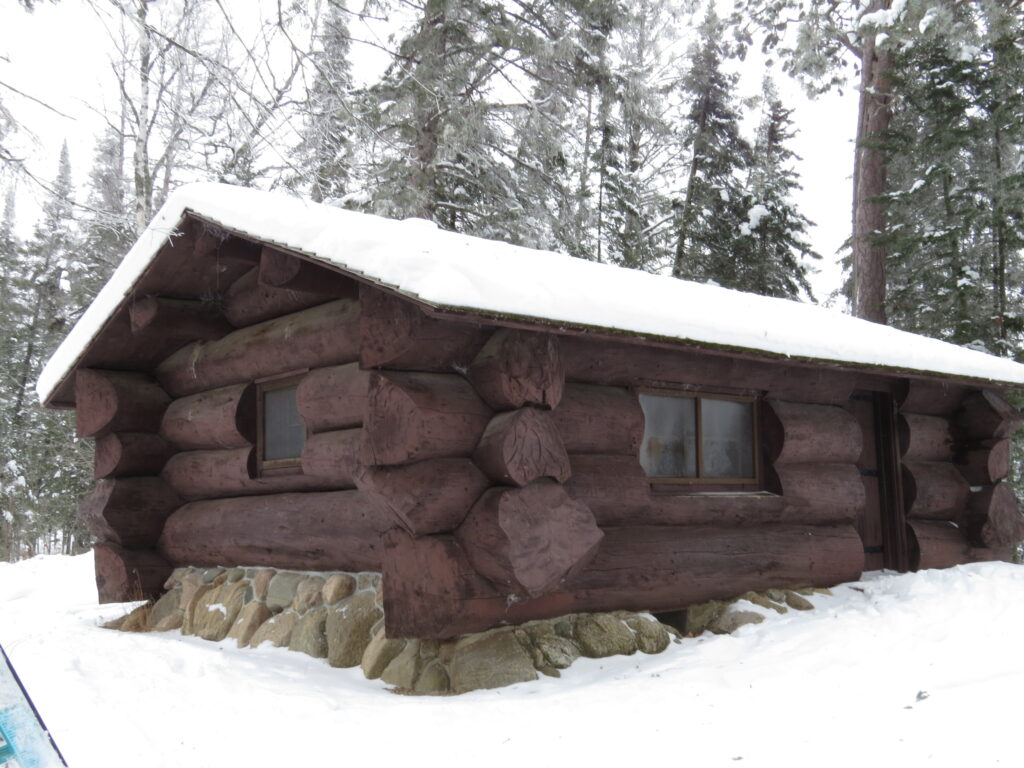
The trail followed the east arm of Lake Itasca and climbed a high ridge. The trees were ghostly with frost in the cloudy, foggy day.
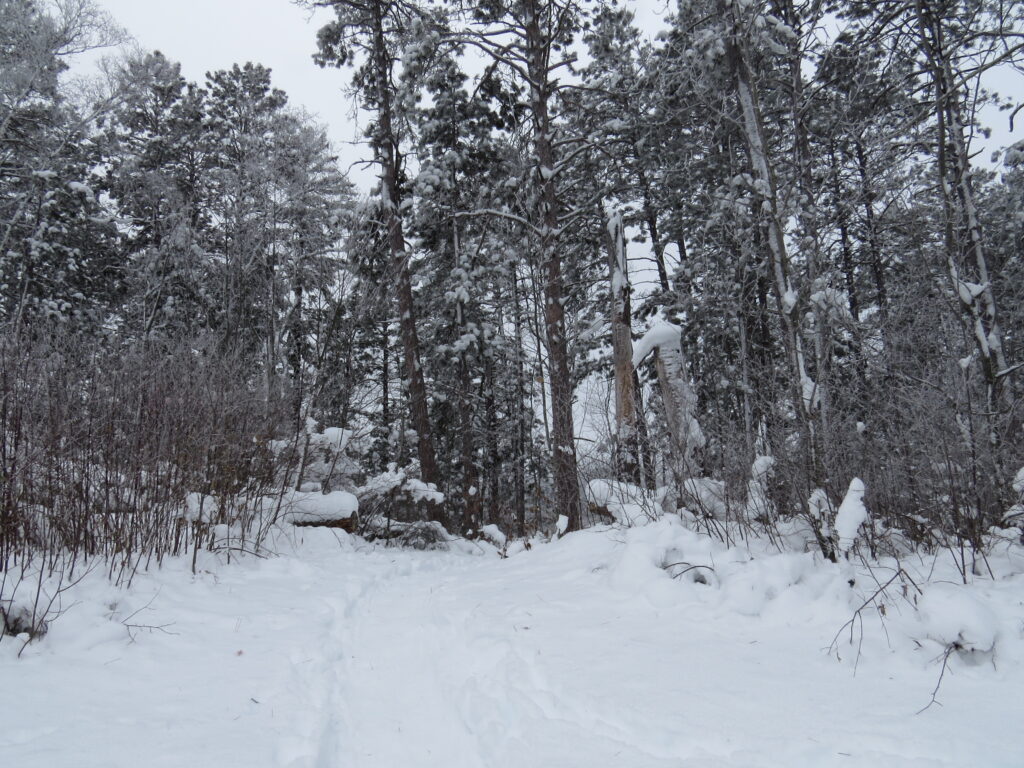
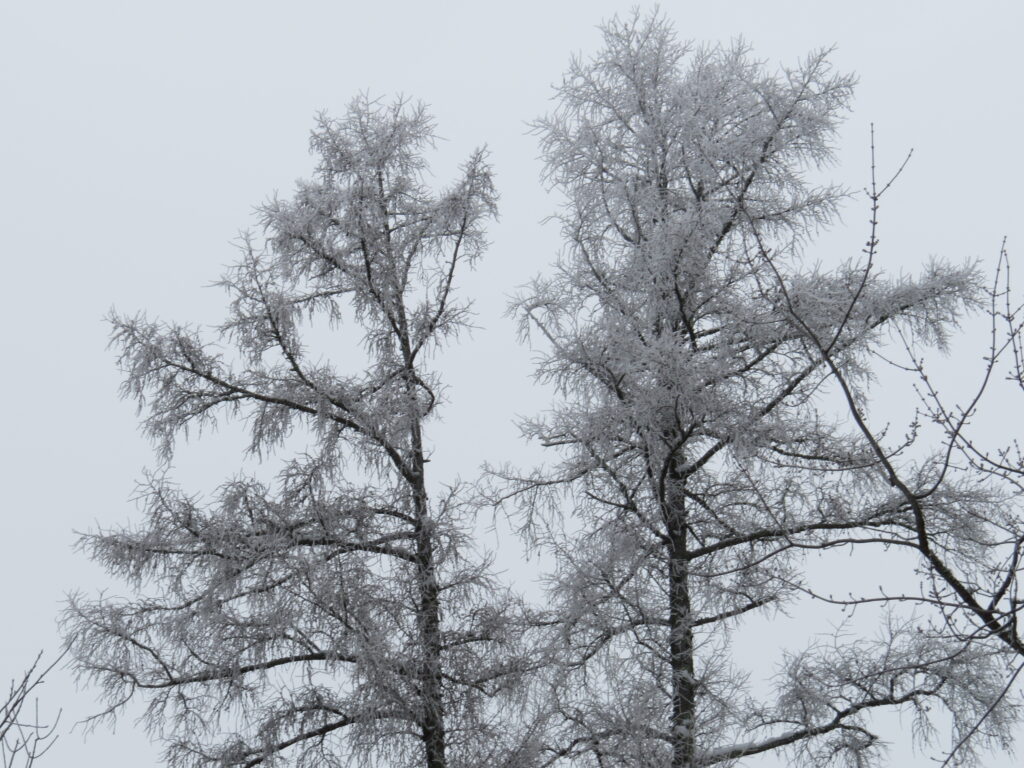
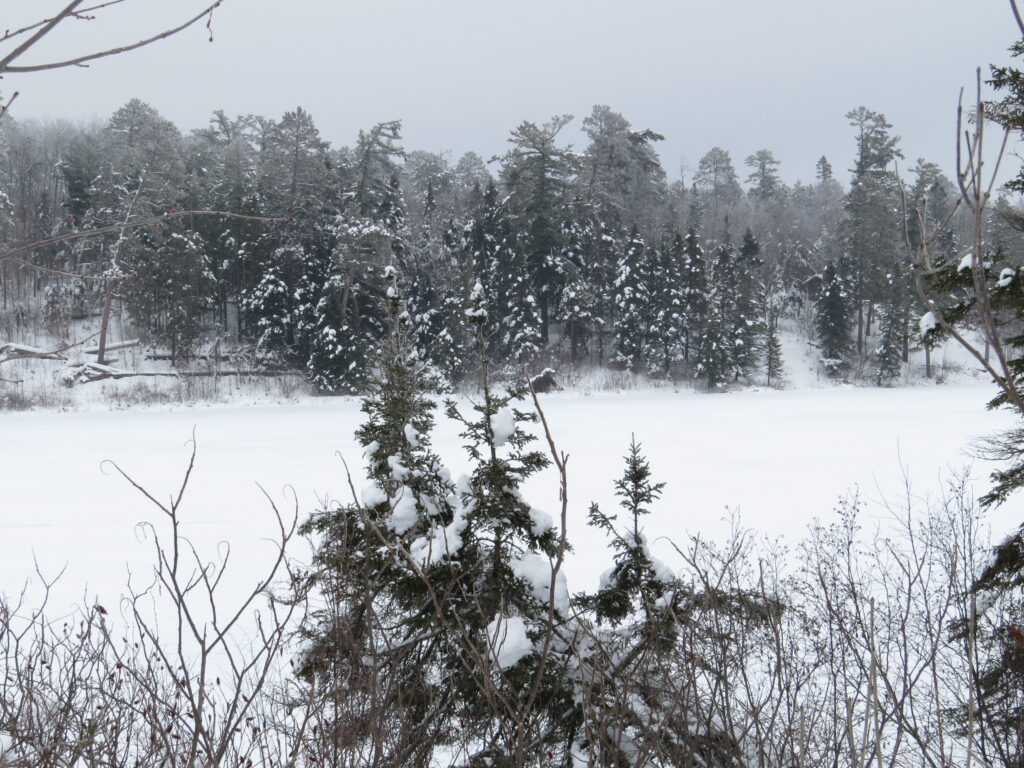
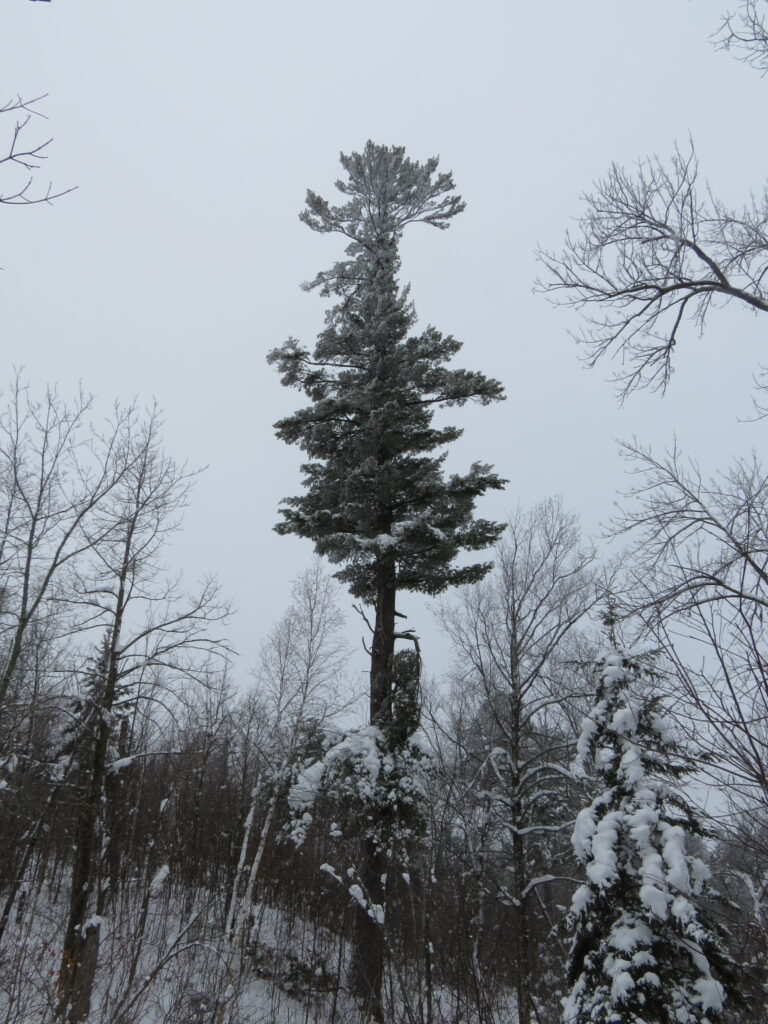
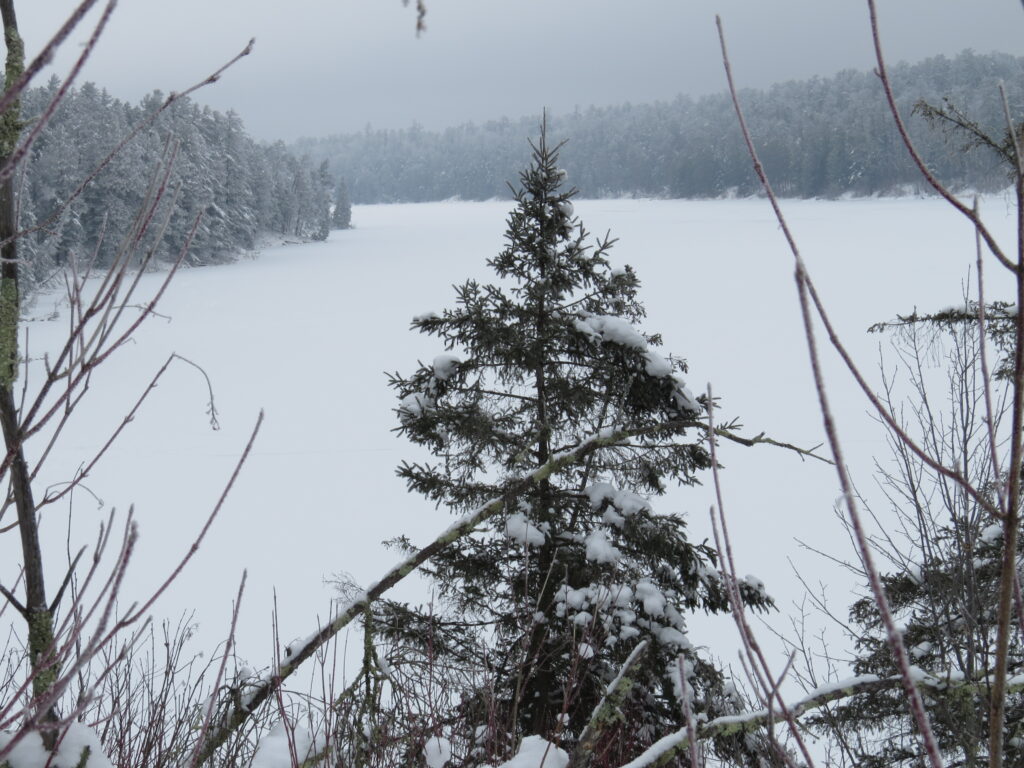
Green Lichens and red Highbush Cranberry berries were almost shocking in their brilliant color compared to the vast white/gray/brown landscape we ‘shoed’ through.


After our climb to the ridge, we descended to a small lake about halfway around the loop. It looked wild and remote.
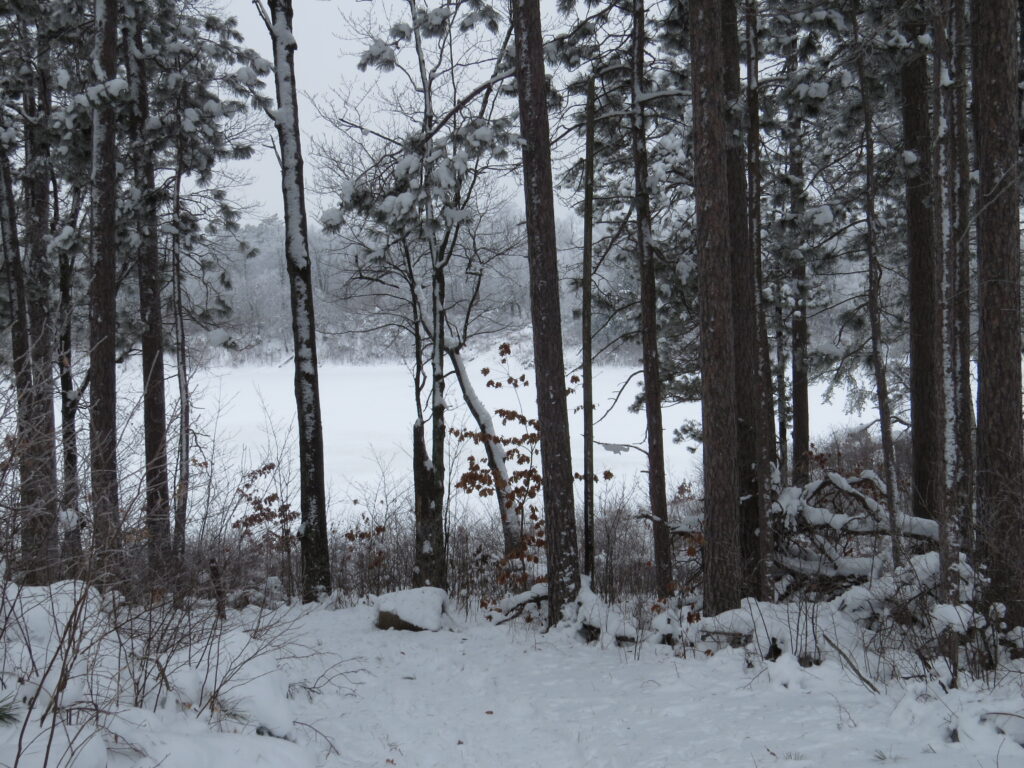
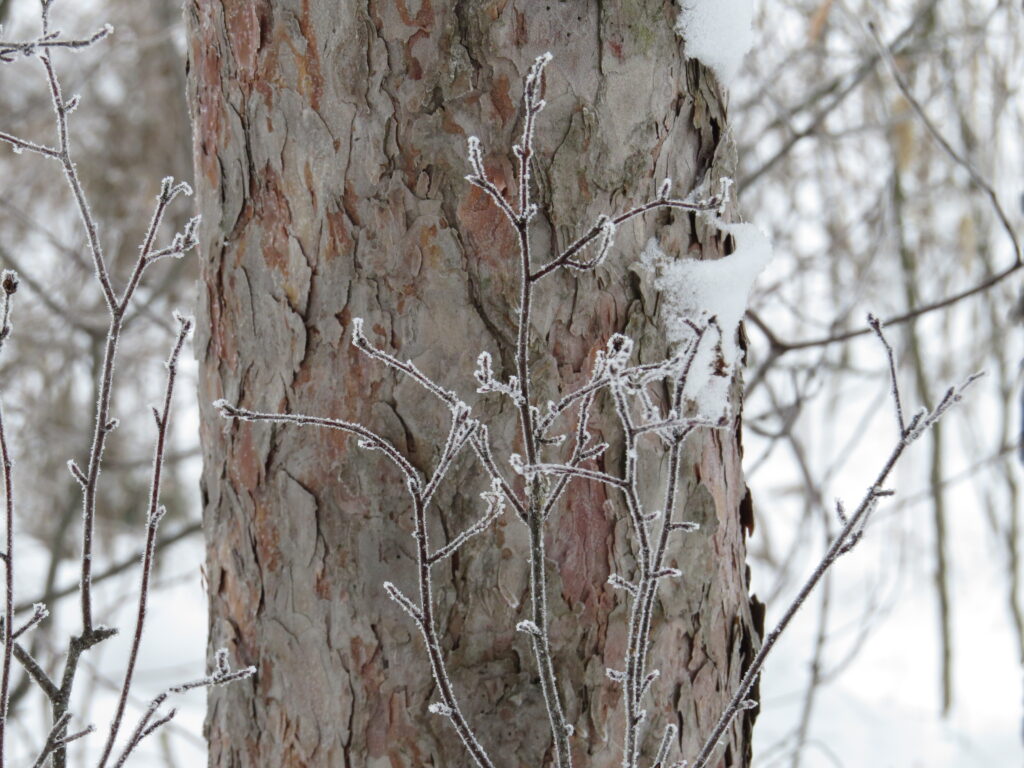
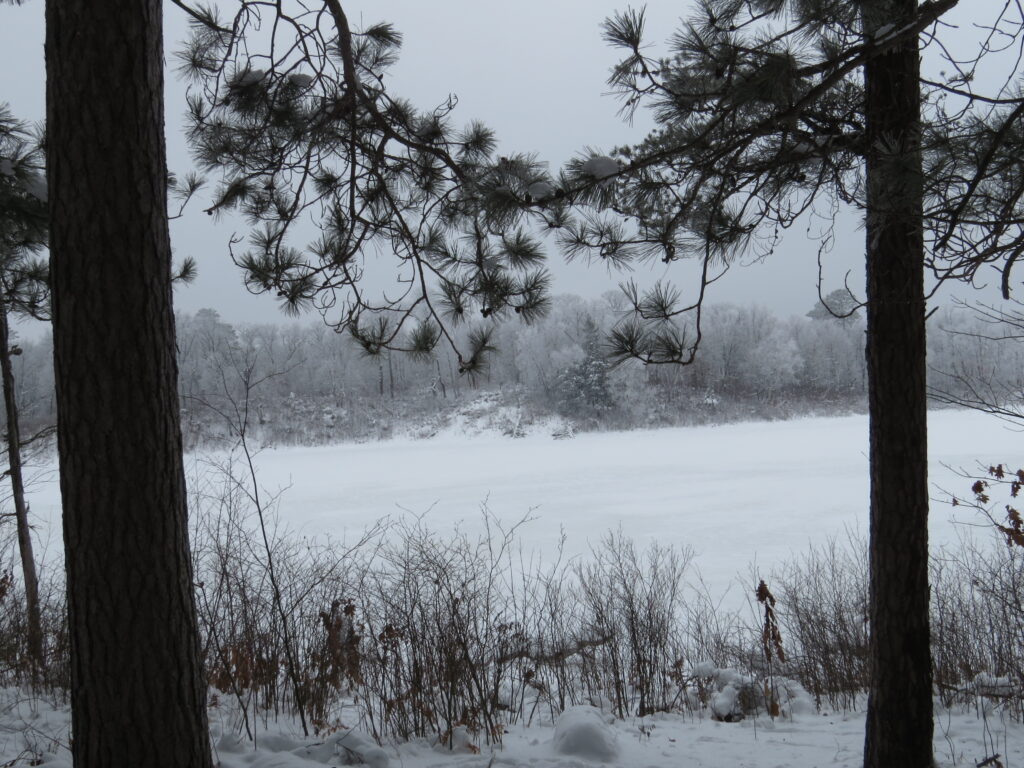
We continued to pass by giant White Pines, the ‘ancient’ ones in the diverse, frosted forest. It was a snowshoe hike that opened my lungs and strained my legs. When we stopped to rest, the snowy quiet bathed my senses, and it all felt so good.
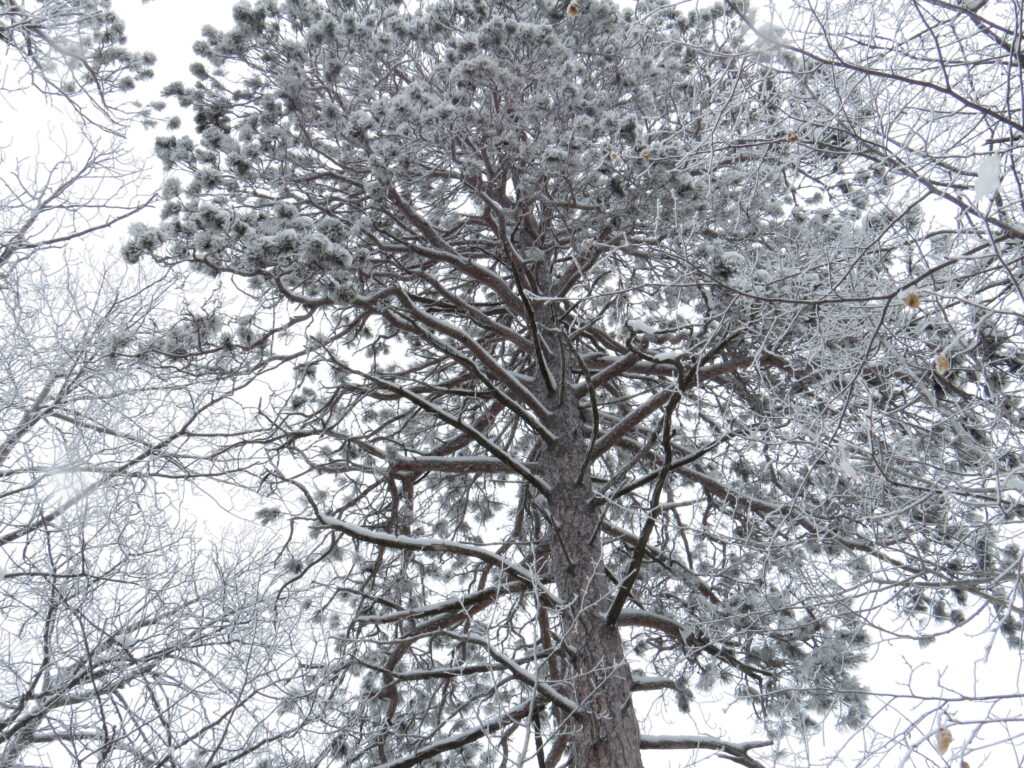
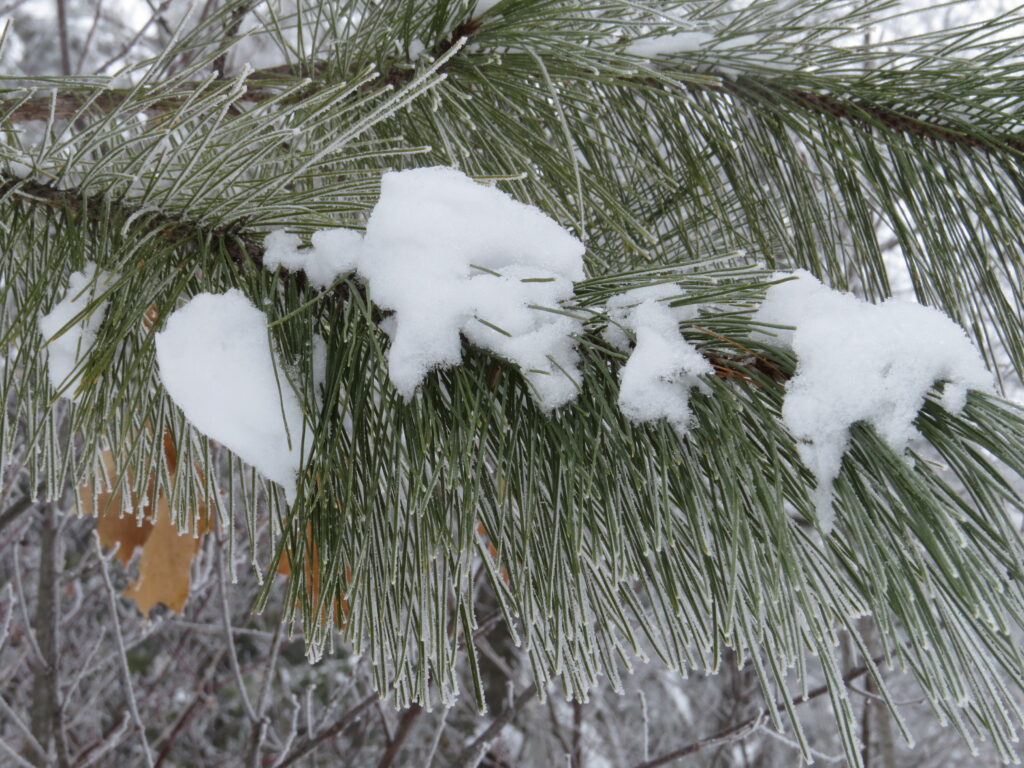
Towards the end of the trail we saw this little snowman tree—an evergreen wrapped in a blanket of snow—surrounded by his young deciduous friends.
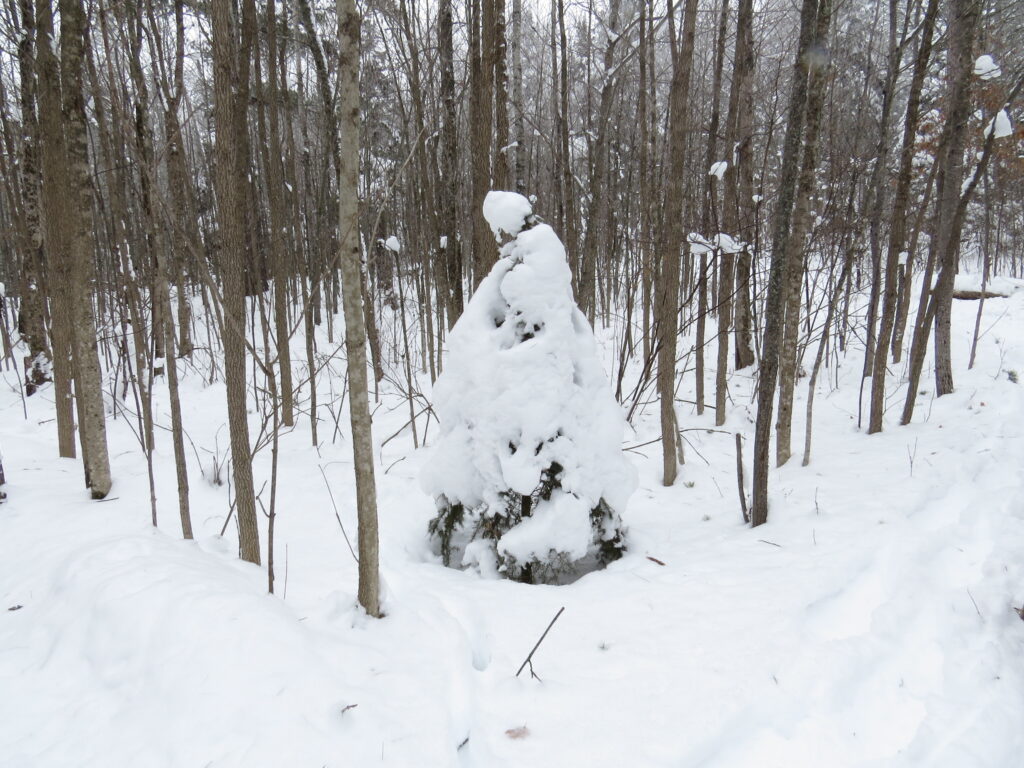
A cluster of Paper Birch trees epitomized our old year/new year weekend. The old Birch had wounds and peeling bark, layers of lichens and moss, and had lost the white luster of a young Birch. The young ones grew from the base of the elder and had been nourished by the extensive root system of the old one. Old and new ending and starting from the same place.
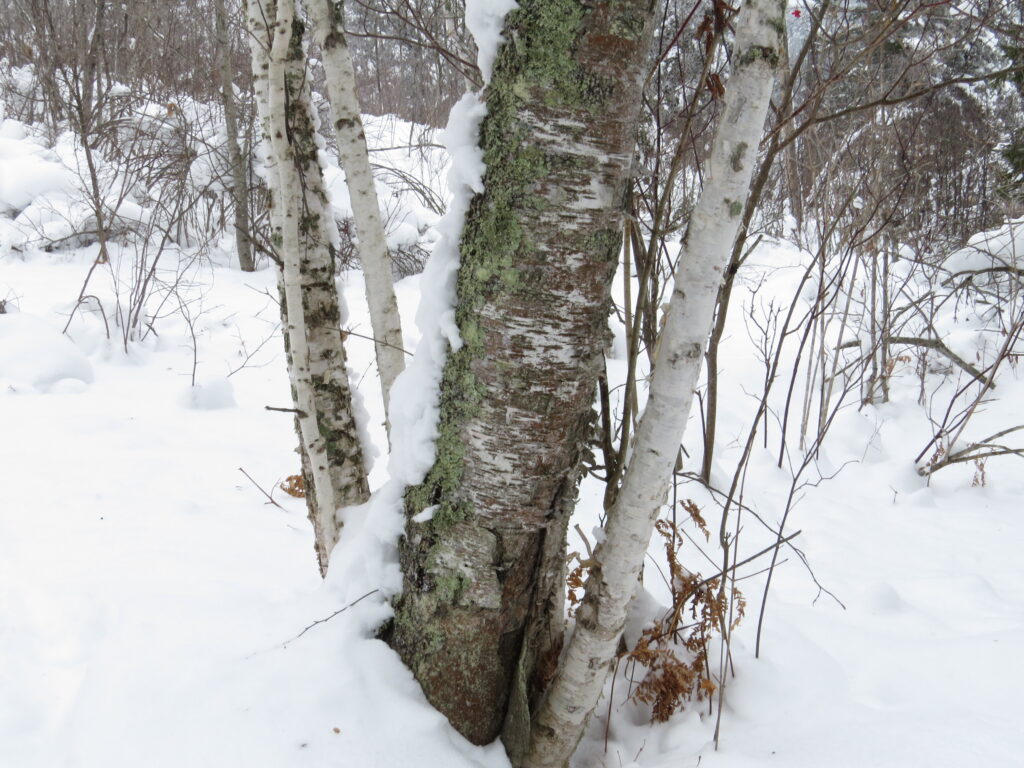
We ended our year in the same place we began our new year, and yet, it still had a different feel from one day to the next. The Mississippi River runs deep in the heart and soul of those who lived and died on and beside the River like Chris’ family had in the little village of Cassville. Chris feels it when he sees the River. My feelings about the River are more primitive, I think. I see it as life-giving water, a metaphoric trail of our life’s flowing journey, a barrier and boundary that stresses us in our quest to ‘move on,’ and a rich source of unbridled beauty. The Great River Road, complete with all its bridges, seems to be our human solution to encompass all of those things. I didn’t realize until I was writing how the The Great River Road, along with the flowing River, has connected our present living location to the Brake homeplace in Wisconsin and to the place where Chris’ only sister Mary began her life.
Mary was born with Down Syndrome, and in the mid-fifties, it was common practice for the medical community to recommend and facilitate the institutionalization of babies like Mary. She never came home from the hospital but was sent to a place on the other side of the state—by the Great River. Imagine the shock and trauma of every member of the family, especially for Mary and Chris’ Mom. Mary eventually returned to the west side of the state, closer to home, and she spent holidays and vacations with her parents and five brothers. Finally, with the social emergence of group homes, she had a real home to live and work in—she flourished at her vocational services job for thirty-seven years and built friendships with her cohorts and caregivers with her loving and outgoing personality. She was a joy to our family and to all who met her in so many ways. Mary’s life ended one week after the beginning of the New Year. She will be buried high on a hill that overlooks the Great River in Cassville. We will travel the The Great River Road to be there.
And thus, we begin, again, at the beginning of a New Year with hope and expectations. We also begin, again, at the beginning of another January of grief at the loss of a sibling, the same as we were just one year ago when Chris’ brother Jon died. But we aren’t really starting at the beginning—the slate does not get wiped clean—but it is a new beginning, nonetheless. Our grief over Mary’s death gets added to the grief over Jon’s death and brother Paul’s death, and Chris’ parents’ deaths, and my Dad’s December death seven years ago, along with the ongoing grief of broken relationships that have a deep river flowing through them with no bridge in sight. What does one do with such grief? It will take a while for us to get our bearings again, but we will. With each grief-filled experience, we have learned that we will get through it, even when the hurt feels unbearable. We have become resilient in a way that wasn’t planned or wanted. It has strained our hearts and made them stronger. It has opened our awareness to the tragedy, joy, heartbreak, goodness, chaos, and peace of living these lives we have been given. And every time we walk in the forest, we will be bathed in unbridled beauty and quiet, and it will all feel so good.
I’m so very sorry to learn about Mary’s death. She has been in my prayers since you first asked me.
There’s so much pathos and wisdom in this post. I am holding you, Chris, and Mary in the Light.
Thank you so much for that, Bob. She was a light in our lives.
So sorry for your family’s loss, Denise. Your speaking of Mary reminds me of my cousin Charliene, born with Down Syndrome. She was very loving as well and also quite a character! She was beloved by all the family as it seems that Mary was.
Thank you, Ann. She was loved and a character, for sure. She couldn’t speak very well, but she was a good communicator with her facial expressions and her tone. Thank you for telling me about Charliene.
In replying to Lorna you mentioned institunalization. Charliene was born in 1947 and it was recommended that she be put in a home but her parents refused. However, they took a lot of criticism. I could go on and on about the road blocks society put in their way. It helped when sheltered workshops and such came into being.
What a decision to even have to make–and then not to have support in that. I am very glad our society has changed in regards to people with disabilities. (Even as I know more needs to be done.) Thanks, Ann.
There is so much in this meditation on the Mississippi. The headwaters in winter bringing in the new year, to the flowing waters downstream. The river continues to flow, but its different as time passes.
So true, Paula. It imbued the lives of Chris’ folks and also their kids.
The past year was so difficult and I was grateful to wash it away. Your words remind me that it can’t possibly be wasted away completely. The grief is part of me. My senses of optimism and hope have changed but are still with me. I hope for you and your family peace and comfort in 2023!
Thank you for sharing your stories.
It’s a huge step to integrate the grief into who we are now and going forward. The lessons are so dang hard-earned, and your year of grief was intense, Betsy. I hope the same for you and Marty and family. We send our love to you all.
thank you for this nature meditation and the over-arching feeling of hope for the future. I am sorry for your loss of another family member but very happy that our society has grown (somewhat) in that Mary was allowed to return home and thrive in an environment that used to exclude Down’s syndrome people. My nephew thrives on a farm in this day and age. may we continue to grow culturally and ethically in our understanding of those that are ‘not like us’.
It is shocking that in our lifetime so many people with disabilities were institutionalized. It is a clarion call to never go backwards and to continue to treat people with respect and dignity. Thank you for telling me about your nephew, Lorna. I have always admired your leadership on all the social justice issues you bring to people’s attention.
Denise, this so beautifully and sensitively told,as always. Thank you for sharing it. Much love and again condolences.
Thank you, Jim. And thanks for your ongoing love and friendship for Chris. It has been so important to him.